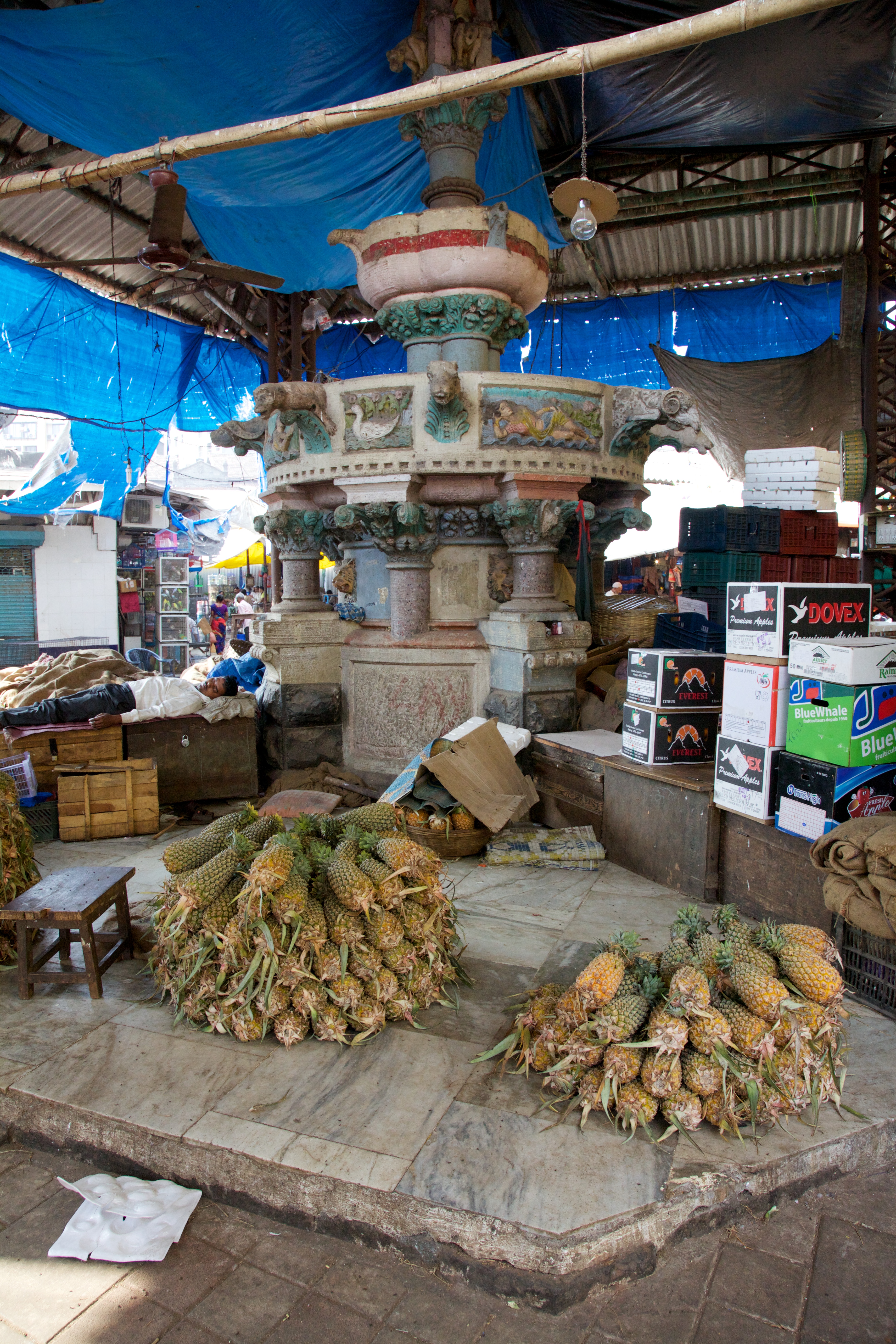Crawford Market Fountain on:
[Wikipedia]
[Google]
[Amazon]
Crawford Market Fountain or Lockwood Kipling Fountain is a listed heritage structure in 
Crawford Market
Crawford Market (officially Mahatma Jyotiba Phule Mandai) is one of South Mumbai's most famous markets. The building was completed in 1869, and donated to the city by Cowasji Jehangir. Originally named after Arthur Crawford, the first Municipal ...
, Mumbai
Mumbai (, ; also known as Bombay — the official name until 1995) is the capital city of the Indian state of Maharashtra and the ''de facto'' financial centre of India. According to the United Nations, as of 2018, Mumbai is the second- ...
that was erected in 1874, and was designed by William Emerson, the British architect who also designed the market. The style is a mix of Greek Revival
The Greek Revival was an architectural movement which began in the middle of the 18th century but which particularly flourished in the late 18th and early 19th centuries, predominantly in northern Europe and the United States and Canada, but ...
and Neo-Gothic
Gothic Revival (also referred to as Victorian Gothic, neo-Gothic, or Gothick) is an architectural movement that began in the late 1740s in England. The movement gained momentum and expanded in the first half of the 19th century, as increasingly ...
, and the four carvings depicting the Indian river goddesses and native birds were done by John Lockwood Kipling
John Lockwood Kipling (6 July 1837 – 26 January 1911) was an English art teacher, illustrator and museum curator who spent most of his career in India. He was the father of the author Rudyard Kipling.
Life and career
Lockwood Kipling was b ...
(father of novelist Rudyard Kipling
Joseph Rudyard Kipling ( ; 30 December 1865 – 18 January 1936)''The Times'', (London) 18 January 1936, p. 12. was an English novelist, short-story writer, poet, and journalist. He was born in British India, which inspired much of his work.
...
), who was the principal at Sir Jamsetjee Jeejebhoy School of Art
The Sir Jamsetjee Jeejeebhoy School of Art (Sir J. J. School of Art) is the oldest art institution in Mumbai, India, and is affiliated with the University of Mumbai. The school grants bachelor's degrees in fine art and sculpture, and Master's de ...
.
Originally, it was located in a garden courtyard setting and was meant to serve as a social space for merchants. The uncontrolled proliferation of shops around it led to a drastic change in setting, and today
vegetable and fruit sellers often set up their stalls around it or use the structure to temporarily store their wares.
In 1985, the crown of the fountain was damaged when a canopy was being raised over it. The Kipling river goddesses frieze was also painted over by someone with the intention to restore their "modesty", as claimed in a note left by the conscientious painter on the fountain. In 2016-17, as part of a larger project, restoration work was carried out on the fountain by a team led by conservation architect Abha Narain Lambah
Abha Narain Lambah (born 1970) is an Indian conservation architect whose eponymous architectural practice has restored several of India's UNESCO World Heritage Sites like the Ajanta Caves, Golconda Fort and Mahabodhi Temple, and Mumbai's Vic ...
, but thereafter the structure continued to be used as a mini warehouse or a dumping site for plastic bags, water bottles or garbage.

References
{{reflist Fountains in Mumbai 1874 sculptures Buildings and structures completed in 1874 Stone sculptures Drinking fountains Outdoor sculptures in India